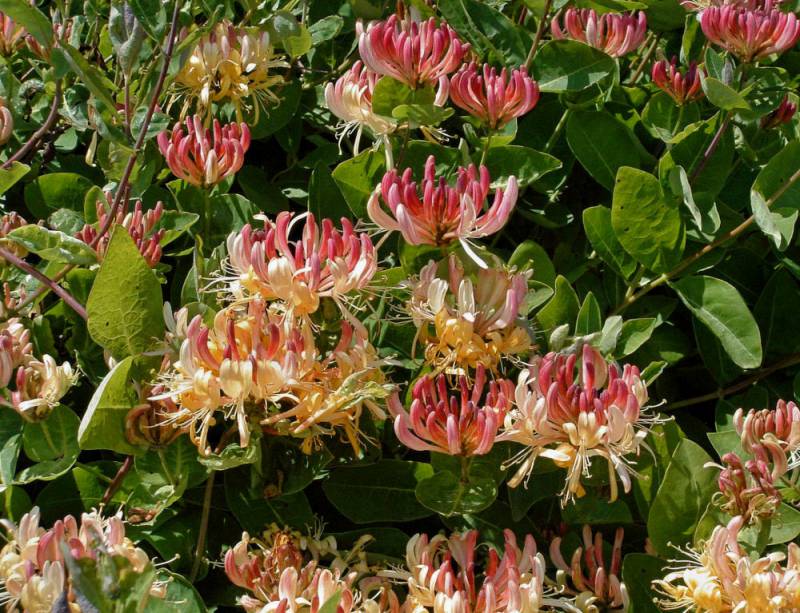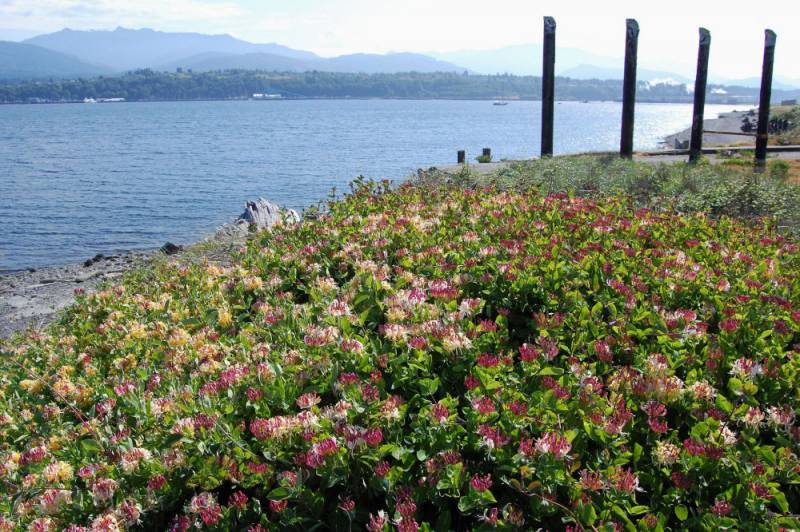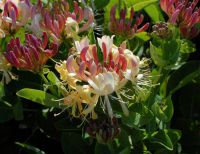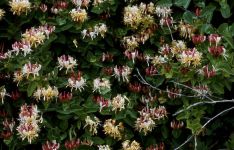Distribution: Occasional west of the Cascades crest in Washington; southern British Columbia to Oregon.
Habitat: Thickets, forest edge, wastelots, and other disturbed areas.
Flowers: June-August
Origin: Introduced from the Mediterranean region
Growth Duration: Perennial
Conservation Status: Not of concern
Pollination: Bumblebees, bees, hummingbirds
Twining vines, sometimes climbing to 6 m., with hollow twigs.
Leaves opposite, pubescent, weakly glaucous and short-hairy beneath, sub-sessile, broadly elliptic, 4-10 cm. long and 2-5.5 cm. wide; occasionally one or more of the pairs at the end of each twig grown together at the base.
Flowers in a dense, short, terminal inflorescence; corolla pale yellowish, tinged with purple, glabrous within, 3-5 cm. long, strongly bilabiate, the lips nearly equaling the tube; stamens 5, glabrous, the filaments attached nearly at the orifice of the corolla; ovary 3-celled, inferior.
Fruit a red berry nearly 1 cm. thick.
Publication: Viaggio al Montamiata...Pisa 113, pl. 1. 1795.
PNW Herbaria: Specimen records of Lonicera etrusca in the Consortium of Pacific Northwest Herbaria database.
WA Flora Checklist: Lonicera etrusca checklist entry.
OregonFlora: Lonicera etrusca information.
E-Flora BC: Lonicera etrusca atlas page.
CalPhotos: Lonicera etrusca photos.
USDA Plants: Lonicera etrusca information.








